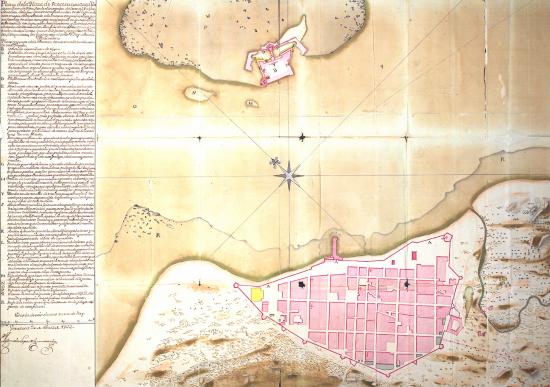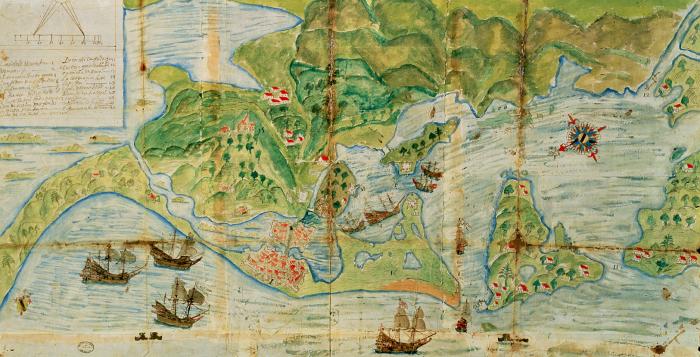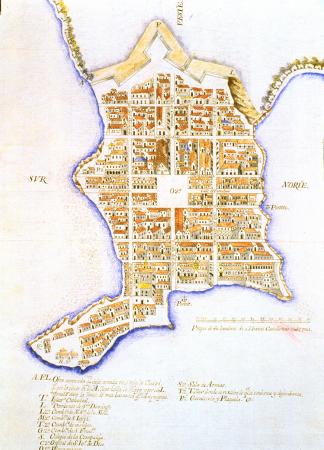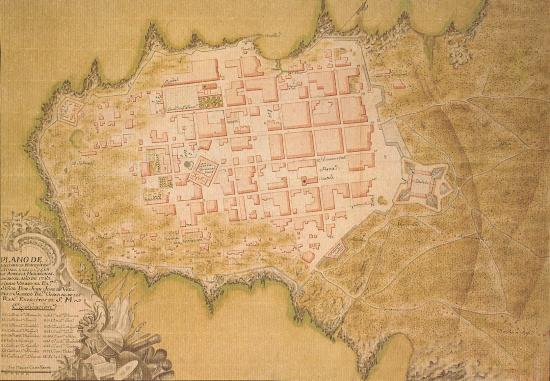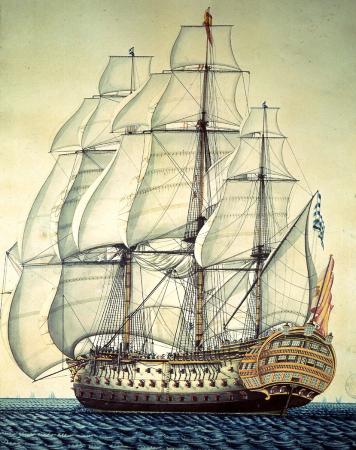 |
 |
| 112-cannon Spanish vessel. 18th century. MN During the reign of Philip V, the ungainly rounded shape of the galleons of the previous century began to be replaced by other, more streamlined vessels. | Plan of a galleon prepared for combat. 17th century. MN From the 16th century onwards, the American run galleons were organized into two fleets which set sail in May and in September, one bound for New Spain and the other for Terra Firma. This was the defense response in the face of the continual threats to Spanish overseas trading operations. |
